Provide shelter for the homeless and save the world
We all are aware of the perils of the honeybee. Most of us are also aware that 30% of the food we eat relies on pollination from the bees. To quote Albert Einstein “If the bee disappeared off the face of the Earth, man would only have four years left to live.”
So I'm sure you are wondering what this has to do with the homeless, right? Well the homeless I am referring to are honeybee swarms. Swarming is how the honeybees reproduce. A strong colony raises a new queen cell and before the cell hatches, the old queen and roughly half the bees swarm.
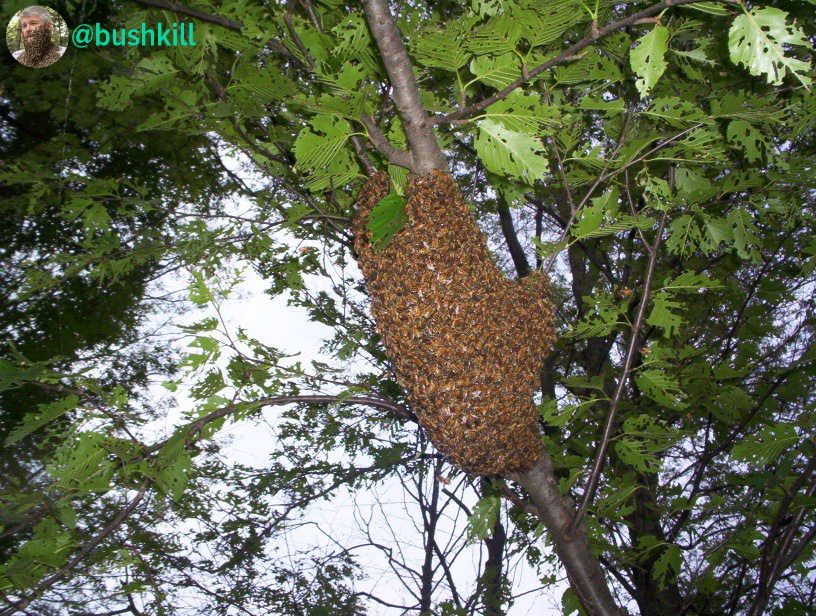
The intriguing part of honeybees swarming is that they have not located a new home when they leave the original colony. Instead the swarming bees alight on a nearby tree branch, fence post or other structure. The cluster of bees then send out scout bees to hunt for a new home.
This scouting for a new nesting site can be as quick as an hour or as long as a few days. Weather plays a part in it as well. If it is rainy and cold the bees will not scout. The danger is that if they do not find a nest site within a few days they actually build their nest where they are alighted.
Humans can be friends or foes
Unfortunately many swarms can end up choosing the wall or ceiling of a house as the "best" spot to make their new home. This can lead to the uninformed homeowner killing off the colony. See my post Why you should never kill honeybees living in your house, it explains the issues it will cause for you.
So what can be done to help
The short answer is provide them a cavity that is more enticing than any cavity they can find in a structure. By doing so, you are not only helping the bees, but potentially your neighbors as well. We use what is known as a 'swarm trap' to do this. It really isn't a trap in the way we think of it. The bees don't get 'trapped' in it, it does them no harm. I have been doing bee removals from houses since 2006 and have experimented with many swarm trap designs through the years. Once honeybees create a nest in a structure, it becomes a magnet for future swarms. So when I do a removal, I provide the homeowner with a swarm trap as an insurance policy against another swarm moving in. Since these homes attract future swarms, it is a good test of swarm trap effectiveness.
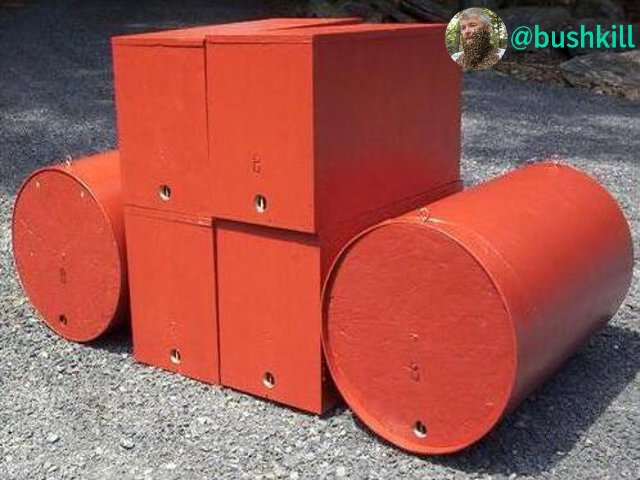
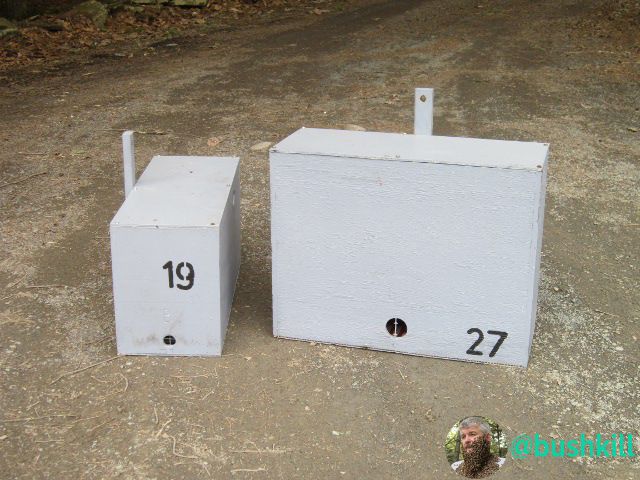
By 2012, I had a design that I was quite happy with, so I put it to some tests. I set up a pair of traps in 11 different locations within a 50 mile area. Each location had a 20 litre and 30 litre trap placed within 2 feet of each other. Each trap was newly built (never had bees in it) and contained 4 foundation-less frames, 1 frame of old brood comb, and one vial of my swarm lure paste. Eight of the 11 locations caught swarms, with one location catching two. Of the 9 swarms caught, 8 where in the 30L trap and only one swarm chose the 20L trap. Although the results may seem to be pretty conclusive, I must warn that I would not consider this test a valid scientific experiment. Trap orientations were dictated by the location. It was not possible to maintain consistent entrance direction, height, or relative position to other trap between the locations.
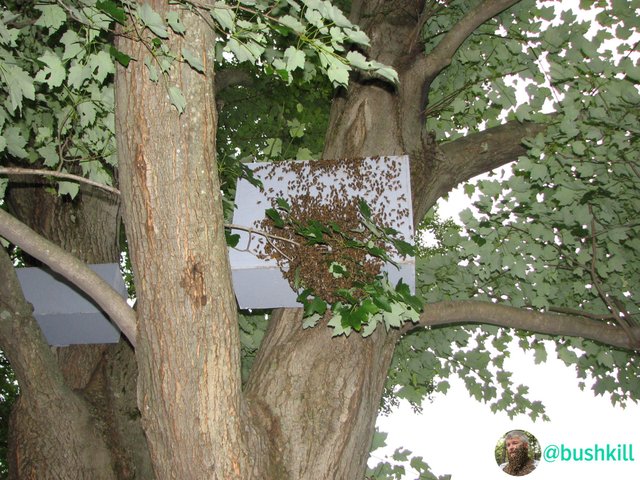
In 2013, an additional experiment was done to get an idea of the effectiveness of swarm lure verses drawn comb. Pairs of new 30L swarm traps where put at each location. One had a vial of swarm lure and 5 foundation-less frames and the other had one old brood comb and 4 foundation-less frames (no swarm lure). Of the 11 locations, eight caught swarms and all chose the old brood comb over swarm lure.
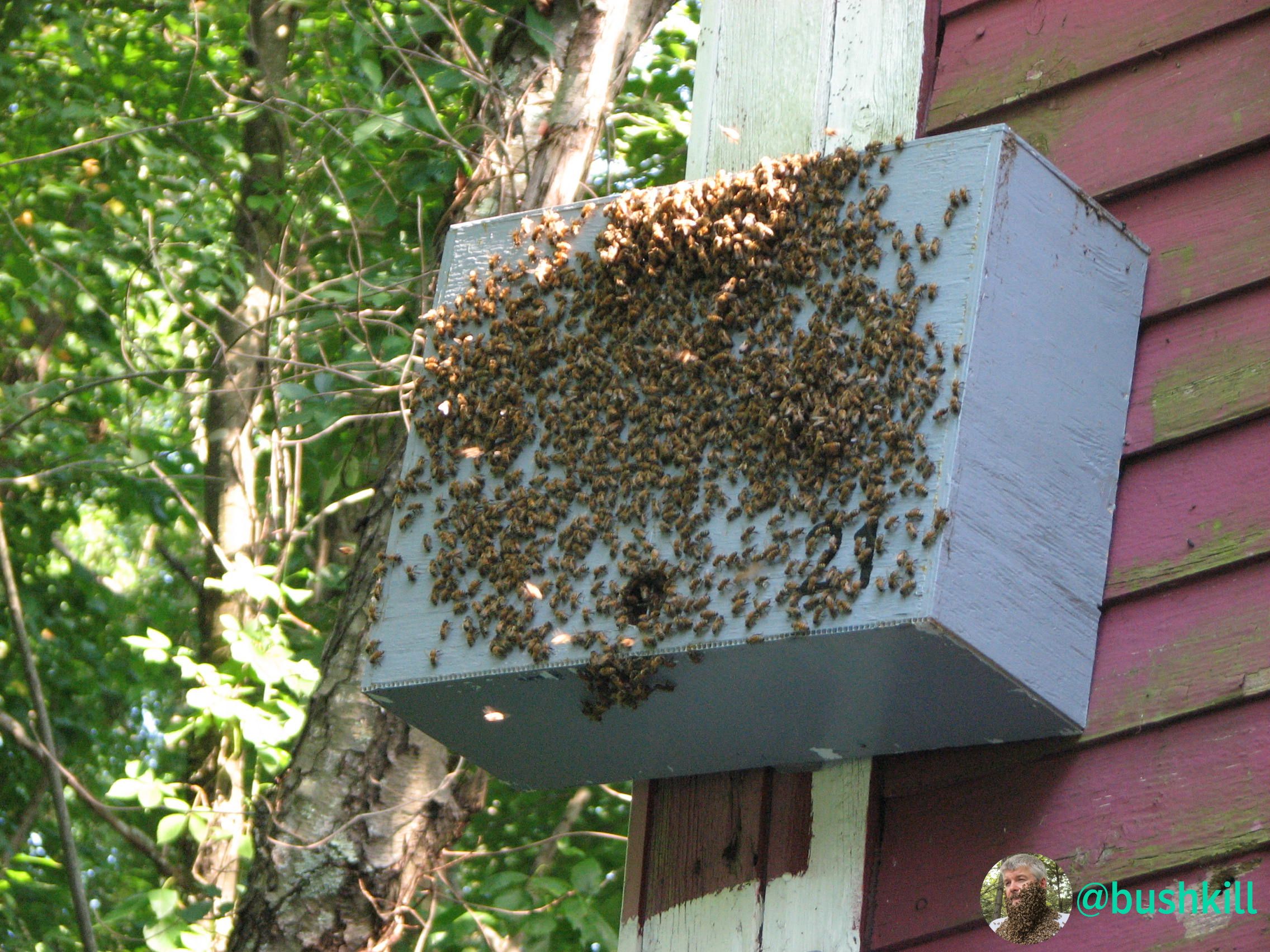
Here is a video of how the trap is configured and and example of a successful capture. I have many other successful swarm trap videos on YouTube HERE
Not a beekeeper? Not a Problem!
Do you put out bird houses, bat houses, or butterfly houses? You don't need to be a beekeepers to put out a swarm trap. There are beekeepers everywhere that would love to have a free colony and will come and remove them. Chances are you have a local bee club that has member list of swarm chasers, or there are plenty of websites like honeybees911.com that can help you find one. There is no need to panic if honeybees move into you trap, they will go about their work and will be of no threat. They can easily reside in the trap for a month before being removed.

Where to put a swarm trap
There are all kinds of anecdotal guidelines about height of trap and entrance orientation, but my experience has been that with the right trap it does not matter. The bees will find it. So I do everything I can to make it as easy as possible to handle the traps. A full trap can weigh up to 30 lbs. so I do not want to deal with ladders if I don't have to. 90% of my traps are hung so that I can get them when standing on the ground. The only exception is that if they are in an area that can potentially be vandalized, then I will hang them up higher and out of site.
Free plans to build your own
If you would like to build some of these traps, I am offering the plans for free. They can be downloaded HERE
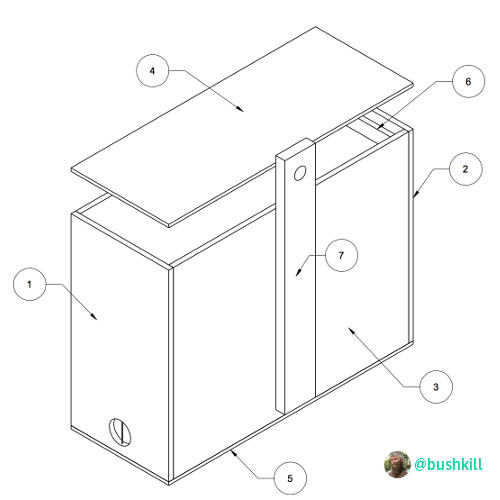
If you don't have the resources or skills to build your own, I do offer them for sale on my website. Our webstore excepts multiple forms of crypto payments, including Steem and SBD.
Interested in Beekeeping?
Follow me (@bushkill) so you don't miss the next post in the Beekeeping for Everyone! series
Check out the previous posts in the Beekeeping for Everyone! series
#1 - Introduction
#2 - The Importance of Pollinators
#3 - Honeybee Castes
#4 - Honeybee Queens - part 1
Also check out these favorites:
Why You Should NEVER EVER Kill Honeybees Living in Your House
The Mysteries of a Bee Beard Revealed!!
Talk Beekeeping

https://discord.gg/RwmvvFH
Beekeep On!
![]()
@bushkill
Thanks Jack, you are one of the folks in the Whaleshare community that keeps me going 🏃♂️
@bushkill your doing some great job with your blogs aboute beekeeping man, respect.
upvoted my friend :)
thanks crystal
This is outstanding!
Glad you like it, thanks
Very interesting and well written. When I was very young I was fascinating by all kinds of insects, ants and bees in particular. After a couple incidents with ans in my pants and a swarm of yellow jackets, I have been fearful of them. I could see doing this and getting a local beekeeper to come and get them though.
You should try finding a local beekeeper and checking out their bees with them. Honeybees are way less aggressive than yellow jackets. You never now, you might be so fascinated seeing them in person that the fear will go right away.
Yes, I have thought of doing that.
Just Do It! 👍🏻
Love these posts, but I have a friend that's gonna die when he sees this! :)
Pass it on, the more people we make aware, the better.
It's amazing how much the bees cluster.
Yes, they are a tight community
This is very interesting. Do you only recommend a bee trap for those that have a bee problem?
It is good insurance for everybody as you never know when a honeybee swarm will come your way. Especially with more and more new people getting into beekeeping. I have caught swarms in the middle of a housing development. If a colony moves into the wall of your house, you are looking at $400-$800 to get it removed.
I have phobia for bees. But I love the honey. :)
phobias are meant to be overcome :-)
Just as always. Thanks for sharing your knowledge sir.
@seyiodus.
@seyiodus thanks for being a part of the Whaleshare community :-)
@bushkill, that's really cool that you're helping others build bee condos!
Yes, I have been preaching the bird house model for a few years now in my bee classes, now trying to expand it to the larger population.